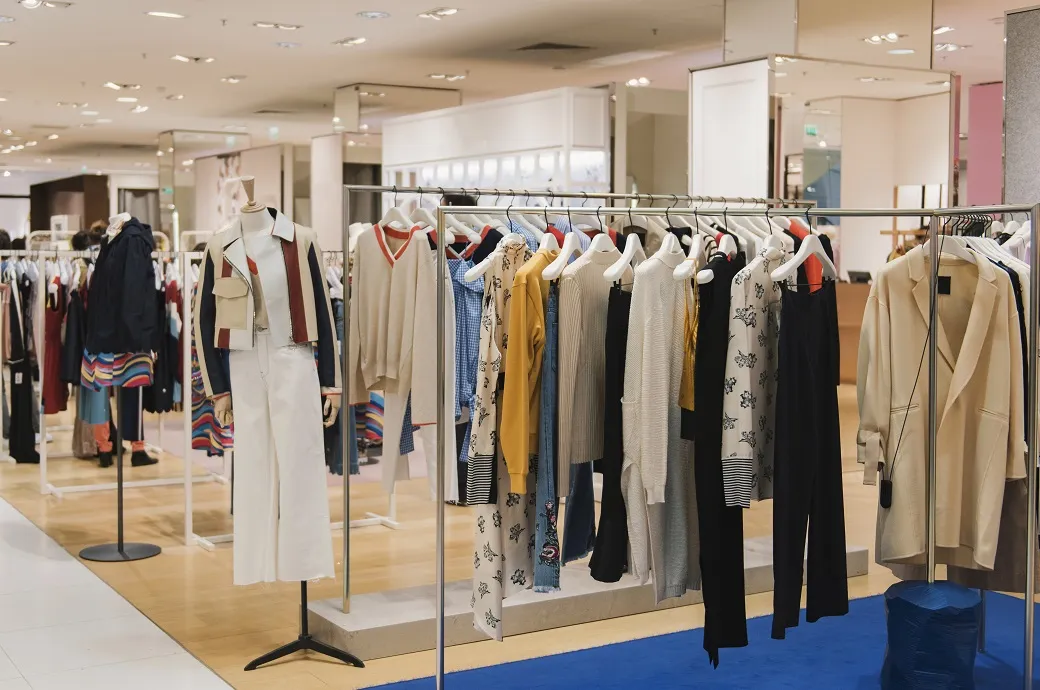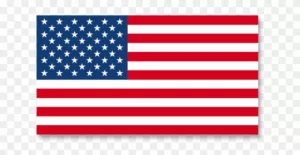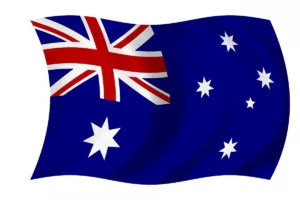Top 10 Readymade Garments Importing Countries
Md. Joynal Abdin*
Business Consultant & Digital Marketer
Co-Founder & CEO of Bangladesh Trade Center
The international trade of readymade garments plays a crucial role in the global fashion and textile industry. It involves the export and import of clothing items that are manufactured and ready for sale. Here are some key points regarding the international trade of readymade garments:
- Global Supply Chains: Readymade garments are often produced in countries with competitive advantages in terms of labor costs, manufacturing capabilities, and access to raw materials. These garments are then exported to meet the demand in other countries.
- Exporting Countries: Several countries are major exporters of readymade garments. Some prominent exporting countries include China, Bangladesh, Vietnam, India, Turkey, Italy, and Germany. These countries have established garment industries and often benefit from economies of scale and cost efficiencies.
- Importing Countries: Importing countries depend on readymade garment imports to meet their domestic demand, supply fashion retailers, and cater to consumer preferences. The United States, European Union countries, Japan, and Canada are among the major importing countries.
- Trade Agreements: Trade agreements and preferences, such as free trade agreements (FTAs) and preferential trade arrangements, can influence the international trade of readymade garments. These agreements often reduce or eliminate tariffs and trade barriers, promoting smoother trade flows between participating countries.
- Retailers and Brands: Global retailers and brands play a significant role in the international trade of readymade garments. They source garments from different countries based on factors like cost, quality, and fashion trends, and distribute them to their respective markets.
- Labor and Social Issues: The readymade garment industry is often associated with labor and social issues, including worker conditions, wages, and labor rights. Efforts have been made to improve working conditions and promote sustainable and ethical practices in the industry.
- Trade Data and Statistics: Trade data and statistics, including import and export figures, are collected to track the flow of readymade garments between countries. These data help policymakers, businesses, and researchers analyze market trends, identify opportunities, and make informed decisions.
It’s important to note that the dynamics of the international trade of readymade garments can change over time due to factors such as shifts in production locations, changes in consumer preferences, trade policies, and global economic conditions. Consulting up-to-date trade data and reports from reputable sources is crucial for obtaining the most accurate and current information.

Top 10 Readymade Garments Importing Countries:
The top 10 countries importing readymade garments (clothing) vary depending on various factors such as trade policies, demand, and economic conditions. However, the following list represents some of the major importing countries:
- United States: The United States is one of the largest importers of readymade garments, with a significant consumer demand for clothing.
- Germany: Germany has a strong textile industry but also imports a substantial amount of readymade garments.
- United Kingdom: The UK has a thriving fashion industry, but it also relies on imports to meet the demands of its consumers.
- France: Known for its fashion industry, France imports a considerable amount of readymade garments to cater to its market.
- Japan: Japan has a well-established fashion market and imports a significant number of readymade garments.
- Netherlands: The Netherlands serves as a major import hub for readymade garments, distributing them across Europe.
- Canada: Canada has a significant demand for readymade garments and relies on imports to meet consumer needs.
- Australia: Australia imports a substantial amount of readymade garments due to its geographic location and consumer demand.
- Spain: Spain has a strong fashion industry but also imports clothing to meet the demands of its consumers.
- Belgium: Belgium imports a notable quantity of readymade garments, acting as a distribution center for Europe.
Please note that the rankings and import figures may have changed since 2021. It’s always recommended to consult up-to-date trade data and reports for the most accurate and current information.
United States

The United States is a significant importing country for readymade garments. As one of the largest consumer markets in the world, the United States relies on imports to meet the demand for clothing and fashion. Here are some key points regarding the United States as a readymade garments importing country:
- Scale of Imports: The United States imports a substantial amount of readymade garments to cater to its domestic market. It relies on imports to complement its domestic production and offer a wide range of styles and brands to consumers.
- Global Sourcing: The United States sources readymade garments from various countries around the world. Major exporting countries to the U.S. include China, Vietnam, Bangladesh, Mexico, India, and others. These countries often offer competitive labor costs and production capabilities.
- Retailers and Brands: U.S.-based retailers and fashion brands play a crucial role in importing readymade garments. Companies such as Gap, H&M, Zara, Nike, and many others import clothing items from their global supply chains to stock their stores and meet consumer demand.
- Trade Policies: Trade policies and agreements, such as tariffs and free trade agreements, can impact the import of readymade garments into the United States. Changes in trade policies, including tariff rates or trade tensions with specific countries, can affect the cost and availability of imported garments.
- Consumer Preferences: U.S. consumers have diverse preferences when it comes to fashion, and imports allow them access to a wide variety of styles, designs, and price points. Readymade garments from different countries cater to different tastes and fashion trends.
- Trade Data: Trade data and statistics are collected to track the import of readymade garments into the United States. These data provide insights into the volume, value, and origin of imported garments, enabling analysis of market trends and patterns.
Germany

Germany is a notable importing country for readymade garments. While Germany has a strong textile and fashion industry of its own, it still relies on imports to meet the demands of its consumers and offer a diverse range of clothing options. Here are some key points regarding Germany as a readymade garments importing country:
- Scale of Imports: Germany imports a significant amount of readymade garments to supplement its domestic production and meet consumer demand. This is due to factors such as cost efficiency, variety, and fashion trends that are available through imports.
- Global Sourcing: Germany sources readymade garments from various countries across the world. Major exporting countries to Germany include China, Bangladesh, Turkey, India, Italy, and other European countries. These countries often provide a mix of competitive pricing, quality, and specialized products.
- Retailers and Brands: German retailers and fashion brands play a crucial role in importing readymade garments. Companies such as Zara, H&M, C&A, Esprit, and many others import clothing items to stock their stores and cater to consumer preferences.
- Trade Policies: Trade policies and agreements can influence the import of readymade garments into Germany. These policies may include tariffs, import regulations, and preferential trade agreements that impact the cost and availability of imported garments.
- Sustainable Fashion: Germany has shown increasing interest in sustainable and ethically produced fashion. This has led to a demand for imported garments that meet sustainable and fair trade standards.
- Trade Data: Trade data and statistics are collected to track the import of readymade garments into Germany. These data provide insights into the volume, value, and origin of imported garments, allowing analysis of market trends and patterns.
United Kingdom

The United Kingdom is a significant importing country for readymade garments. While the UK has a thriving fashion industry and produces its own clothing, it also relies on imports to meet consumer demand and offer a diverse range of fashion choices. Here are some key points regarding the United Kingdom as a readymade garments importing country:
- Scale of Imports: The United Kingdom imports a considerable volume of readymade garments to supplement its domestic production and meet consumer needs. Imports allow for a wider variety of styles, brands, and price points to be available in the market.
- Global Sourcing: The UK sources readymade garments from various countries across the globe. Major exporting countries to the UK include China, Bangladesh, Turkey, India, Italy, and other European countries. These countries offer competitive prices, different fashion aesthetics, and specialized products.
- Retailers and Brands: UK-based retailers and fashion brands play a significant role in importing readymade garments. Companies such as Zara, H&M, Primark, Next, ASOS, and many others import clothing items from their global supply chains to stock their stores and cater to consumer preferences.
- Trade Policies: Trade policies and agreements can impact the import of readymade garments into the UK. Factors such as tariffs, customs regulations, and trade agreements (including Brexit-related changes) can influence the cost, logistics, and availability of imported garments.
- Consumer Preferences: UK consumers have diverse fashion tastes and preferences, and imports allow access to a wide range of styles, designs, and brands. Importing readymade garments ensures that the UK market remains dynamic and aligned with global fashion trends.
- Trade Data: Trade data and statistics are collected to monitor the import of readymade garments into the UK. These data provide insights into the volume, value, and origin of imported garments, facilitating analysis of market trends and patterns.
France

France is known for its fashion industry and is a significant player in the global fashion market. While France also has a strong domestic production of garments, it does import readymade garments to meet the diverse demands of its consumers. Here are some key points regarding France as a readymade garments importing country:
- Scale of Imports: France imports a considerable amount of readymade garments to supplement its domestic production and provide a wide range of fashion choices to its consumers. Imports help cater to different styles, brands, and price points.
- Global Sourcing: France sources readymade garments from various countries around the world. Major exporting countries to France include China, Bangladesh, Turkey, Italy, India, and other European countries. These countries offer a mix of competitive pricing, craftsmanship, and fashion aesthetics.
- Retailers and Brands: French retailers and fashion brands play a significant role in importing readymade garments. Companies such as Zara, H&M, Uniqlo, Mango, and many others import clothing items from their global supply chains to stock their stores and meet consumer preferences.
- Trade Policies: Trade policies and agreements can influence the import of readymade garments into France. Factors such as tariffs, customs regulations, and trade agreements (both regional and bilateral) can impact the cost, logistics, and availability of imported garments.
- Luxury Fashion: France is renowned for its luxury fashion sector. While luxury brands often have their own manufacturing facilities, they may still import certain readymade garments or components to maintain the exclusivity and quality associated with their brands.
- Trade Data: Trade data and statistics are collected to track the import of readymade garments into France. These data provide insights into the volume, value, and origin of imported garments, facilitating analysis of market trends and patterns.
Japan

Japan is a major player in the fashion industry and has a rich cultural appreciation for clothing. While Japan has a well-developed textile and fashion manufacturing sector, it also imports readymade garments to meet consumer demands and offer a diverse range of styles. Here are some key points regarding Japan as a readymade garments importing country:
- Scale of Imports: Japan imports a significant volume of readymade garments to complement its domestic production and meet the diverse fashion preferences of its consumers. Imports allow for a wider variety of styles, brands, and trends to be available in the Japanese market.
- Global Sourcing: Japan sources readymade garments from various countries around the world. Major exporting countries to Japan include China, Bangladesh, Vietnam, Indonesia, Italy, and other Asian and European countries. These countries offer different fashion aesthetics, cost efficiencies, and specialized products.
- Quality and Craftsmanship: Japanese consumers value high-quality garments and have a penchant for intricate craftsmanship. While Japan produces many quality garments domestically, imports allow access to international brands and styles that meet consumer expectations.
- Fashion Trends: Japan is known for its vibrant fashion scene and its influence on global fashion trends. Importing readymade garments helps the Japanese market stay connected to international fashion trends and offer a diverse range of styles to fashion-conscious consumers.
- Retailers and Brands: Japanese retailers and fashion brands play a significant role in importing readymade garments. Companies such as Uniqlo, Fast Retailing, GU, Beams, and many others import clothing items from their global supply chains to stock their stores and cater to consumer preferences.
- Trade Data: Trade data and statistics are collected to monitor the import of readymade garments into Japan. These data provide insights into the volume, value, and origin of imported garments, facilitating analysis of market trends and patterns.
Netherlands

The Netherlands is known for its vibrant fashion and retail industry. While the country has a well-established textile and fashion sector, it also imports readymade garments to meet consumer demands and offer a wide range of fashion options. Here are some key points regarding the Netherlands as a readymade garments importing country:
- Scale of Imports: The Netherlands imports a considerable volume of readymade garments to complement its domestic production and provide a diverse selection of clothing to its consumers. Imports help meet the demand for different styles, brands, and price ranges.
- Global Sourcing: The Netherlands sources readymade garments from various countries around the world. Major exporting countries to the Netherlands include China, Bangladesh, Turkey, Germany, Italy, and other European and Asian countries. These countries offer a mix of competitive pricing, quality, and fashion-forward designs.
- Retailers and Brands: Dutch retailers and fashion brands play a significant role in importing readymade garments. Companies such as HEMA, C&A, WE Fashion, Scotch & Soda, and many others import clothing items from their global supply chains to stock their stores and cater to consumer preferences.
- Trade Policies: Trade policies and agreements can impact the import of readymade garments into the Netherlands. Factors such as tariffs, customs regulations, and trade agreements (including those within the European Union) can influence the cost, logistics, and availability of imported garments.
- Sustainable Fashion: The Netherlands has shown increasing interest in sustainable and ethically produced fashion. This has led to a demand for imported garments that meet sustainable and fair trade standards.
- Trade Data: Trade data and statistics are collected to track the import of readymade garments into the Netherlands. These data provide insights into the volume, value, and origin of imported garments, facilitating analysis of market trends and patterns.
Canada

Canada is a significant importer of readymade garments to meet the demands of its diverse population and provide a wide range of clothing options to consumers. While Canada does have its own textile and fashion industry, it also relies on imports to fulfill its fashion needs. Here are some key points regarding Canada as a readymade garments importing country:
- Scale of Imports: Canada imports a substantial volume of readymade garments to complement its domestic production and cater to the preferences and needs of its consumers. Imports allow for a greater variety of styles, brands, and price ranges to be available in the Canadian market.
- Global Sourcing: Canada sources readymade garments from various countries worldwide. Major exporting countries to Canada include China, Bangladesh, the United States, India, Vietnam, and other Asian and European countries. These countries offer diverse fashion styles, competitive pricing, and different production capabilities.
- Retailers and Brands: Canadian retailers and fashion brands play a significant role in importing readymade garments. Companies such as Lululemon Athletica, Hudson’s Bay, Simons, Aritzia, and many others import clothing items from their global supply chains to stock their stores and meet consumer demands.
- Seasonal Variations: Canada experiences distinct seasonal changes, and imports play a vital role in ensuring availability of appropriate clothing for different weather conditions. Winter clothing, in particular, is often imported to meet the demand for warm outerwear and accessories.
- Trade Policies: Trade policies and agreements, such as tariffs and free trade agreements, can impact the import of readymade garments into Canada. Changes in trade policies, including trade tensions or modifications to trade agreements, can influence the cost and availability of imported garments.
- Trade Data: Trade data and statistics are collected to monitor the import of readymade garments into Canada. These data provide insights into the volume, value, and origin of imported garments, facilitating analysis of market trends and patterns.
Australia

Australia is a country that imports a significant amount of readymade garments to meet the fashion needs and preferences of its population. While Australia has its own fashion industry, imports play a crucial role in providing a diverse range of clothing options. Here are some key points regarding Australia as a readymade garments importing country:
- Scale of Imports: Australia imports a substantial volume of readymade garments to supplement its domestic production and offer a wide variety of styles, brands, and price ranges to its consumers. Imports help meet the demand for fashion-forward clothing choices.
- Global Sourcing: Australia sources readymade garments from various countries around the world. Major exporting countries to Australia include China, Bangladesh, Vietnam, India, Indonesia, and other Asian countries. Additionally, imports from European and North American countries are also common. These countries offer different fashion aesthetics, cost efficiencies, and specialized products.
- Seasonal Considerations: Australia’s climate, with its varying temperatures across the country, influences the types of garments imported. For instance, lightweight and summer clothing are often imported to cater to the warm climate in many regions, while heavier clothing and winter wear are imported for cooler areas.
- Retailers and Brands: Australian retailers and fashion brands play a significant role in importing readymade garments. Companies such as Myer, David Jones, Cotton On, Forever New, Country Road, and many others import clothing items from their global supply chains to stock their stores and meet consumer demands.
- Trade Policies: Trade policies and agreements can impact the import of readymade garments into Australia. Factors such as tariffs, customs regulations, and trade agreements can influence the cost, logistics, and availability of imported garments.
- Trade Data: Trade data and statistics are collected to monitor the import of readymade garments into Australia. These data provide insights into the volume, value, and origin of imported garments, facilitating analysis of market trends and patterns.
Spain

Spain is a country with a rich fashion heritage and a thriving retail industry. While Spain has a significant domestic textile and fashion manufacturing sector, it also imports readymade garments to meet consumer demands and offer a diverse range of fashion choices. Here are some key points regarding Spain as a readymade garments importing country:
- Scale of Imports: Spain imports a considerable volume of readymade garments to complement its domestic production and provide a wide variety of clothing options to its consumers. Imports help meet the demand for different styles, brands, and price ranges.
- Global Sourcing: Spain sources readymade garments from various countries around the world. Major exporting countries to Spain include China, Bangladesh, Turkey, Portugal, Italy, and other European and Asian countries. These countries offer a mix of competitive pricing, quality, and fashion-forward designs.
- Retailers and Brands: Spanish retailers and fashion brands play a significant role in importing readymade garments. Companies such as Zara, Mango, Massimo Dutti, Pull&Bear, and many others import clothing items from their global supply chains to stock their stores and cater to consumer preferences.
- Trade Policies: Trade policies and agreements can influence the import of readymade garments into Spain. Factors such as tariffs, customs regulations, and trade agreements (including those within the European Union) can impact the cost, logistics, and availability of imported garments.
- Fashion Industry: Spain is renowned for its fashion industry, with Barcelona and Madrid being prominent fashion hubs. Imports of readymade garments contribute to the vibrant fashion scene in Spain and help meet the demand for new trends and styles.
- Trade Data: Trade data and statistics are collected to track the import of readymade garments into Spain. These data provide insights into the volume, value, and origin of imported garments, facilitating analysis of market trends and patterns.
Belgium

Belgium is a country located in the heart of Europe and has a thriving fashion and retail industry. While Belgium has its own textile and fashion manufacturing sector, it also imports a significant amount of readymade garments to meet consumer demands and offer a diverse range of fashion choices. Here are some key points regarding Belgium as a readymade garments importing country:
- Scale of Imports: Belgium imports a substantial volume of readymade garments to complement its domestic production and provide a wide variety of clothing options to its consumers. Imports help cater to different styles, brands, and price ranges.
- Global Sourcing: Belgium sources readymade garments from various countries around the world. Major exporting countries to Belgium include China, Bangladesh, Turkey, Germany, Italy, and other European and Asian countries. These countries offer a mix of competitive pricing, quality, and fashion-forward designs.
- Retailers and Brands: Belgian retailers and fashion brands play a significant role in importing readymade garments. Companies such as JBC, ZEB, C&A, H&M, and many others import clothing items from their global supply chains to stock their stores and meet consumer demands.
- Trade Policies: Trade policies and agreements can impact the import of readymade garments into Belgium. Factors such as tariffs, customs regulations, and trade agreements (including those within the European Union) can influence the cost, logistics, and availability of imported garments.
- Fashion Industry: Belgium is known for its fashion-forward and avant-garde designs. Imports of readymade garments contribute to the vibrant fashion scene in Belgium and help meet the demand for new trends and styles.
- Trade Data: Trade data and statistics are collected to monitor the import of readymade garments into Belgium. These data provide insights into the volume, value, and origin of imported garments, facilitating analysis of market trends and patterns.
It’s important to note that the dynamics of readymade garment imports can evolve over time due to changes in sourcing strategies, trade policies, and consumer preferences. For the most accurate and up-to-date information, it is advisable to refer to recent trade data, reports, and industry sources specific to Belgium’s readymade garments market.
Top 10 Readymade Garments Importing Countries: Top 10 Readymade Garments Importing Countries
*Author’s Short Profile:

Mr. Md. Joynal Abdin is a Business Consultant & Digital Marketer based in Dhaka, Bangladesh. He is also Co-Founder & CEO of Bangladesh Trade Center. Previously he served at Dhaka Chamber of Commerce & Industry (DCCI) as Executive Secretary; DCCI Business Institute (DBI) as Executive Director; SME Foundation as Deputy Manager; and the Federation of Bangladesh Chambers of Commerce & Industry (FBCCI) as Assistant Secretary.
The list of services Mr. Abdin is offering includes but not limited to Business Research and Documentations like Feasibility Study, Project Proposal Preparation, Writing Business Manual, Standard Operating Procedures etc.; Export Market Selection and Product Positioning at Home and Abroad; Buyers-Sellers Matchmaking; Website Development; Search Engine Optimization (SEO); and Social Media Marketing etc.

